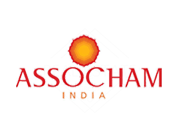Abu-Zahra, T. R. (2010). Berry size of Thompson seedless as influenced by the application of gibberellic acid and cane girdling. Pak. J. Bot. 42: 1755-60.
Abu-Zahra, T. R. and Salameh, N. M. (2012). Influence of gibberellic acid and cane girdling on berry size of Black Magic grape cultivar. Middle-East J. Sci. Res. 11: 718-22.
Acharya, A. K., Acharya, S., Kushwaha, A. and Dahal, K. C. (2023). Understanding bud fruitfulness and importance of gibberellic acid (GA3) application(s) in successful grapevine cultivation. 2nd International Conference on Horticulture from 3 to 4 April 2023 (Advancing Horticulture in Changing Climate & Biodiversity), Godavari Village Resort, Lalitpur, Nepal.
AOAC (1995). Official methods of analysis 16th Edn. Association of official analytical chemists (AOAC). Washington DC, USA.
Boll, S., Lang, T., Hofmann, H. and Schwappac, P. (2009). Correspondence between gibberellin-sensitivity and pollen tube abundance in different seeded vine varieties. Mitteilungen Klosterneubg. 59: 129–33.
Casanova, L., Casanova, R., Moret, A. and Agustí, M. (2009). The application of gibberellic acid increases berry size of ''Emperatriz'' seedless grape. Spanish J. Agric. Res. 7: 919–27.
Coombe, B. G. and Dry, P. R. (2004). Viticulture Volume 1 - Resources (2nd Edn). Winetitles Pty Ltd, Adelaide, South Australia.
Dahal, K. C. (2019). Insights into seasonal yield variation in subtropical table grape production. Ph.D. Thesis, Central Queensland (CQ) University. https://hdl.handle.net/10018/ 1269287.
Dahal, K. C., Bhattarai, S. P., Midmore, D. J., Oag, D. and Walsh, K. B. (2017). Table grape production in the subtropics and prospects for Nepal, Nepalese Horticulture. 12: 6-15.
DoC (2025). Foreign Trade Statistics (FTS). Department of Customs (DoC), Ministry of Finance, Govt. of Nepal. https://www.customs.gov.np.
Dokoozlian, N. and Peacock, W. (2001). Gibberellic acid applied at bloom reduces fruit set and improves size of 'Crimson Seedless' table grapes. HortScience 36: 706–709. doi:10.21273/hortsci.36.4.706.
Elgendy, R., Shaker, G. S. and Ahmed, O. (2012). Effect of foliar spraying with gibberellic acid and/or sitofex on bud behavior, vegetative growth, yield and cluster quality of Thompson seedless grapevines. J. Ame. Sci. 8: 21–34.
Gao, X. T., Wu, M. H., Sun, D., Li, H. Q., Chen, W. K., Yang, H. Y., Liu, F. Q., Wang, Q. C., Wang, Y. Y., Wang, J. and Fei., H. (2020). Effects of gibberellic acid (GA3) application before anthesis on rachis elongation and berry quality and aroma and flavour compounds in Vitis vinifera L. ‘Cabernet Franc’ and ‘Cabernet Sauvignon’ grapes. J. Sci. Food Agric. 100: 3729–40. doi:10.1002/jsfa.10412.
Hed, B., Ngugi, H. K. and Travis, J. W. (2011). Use of gibberellic acid for management of bunch rot on Chardonnay and Vignoles grape. Plant Dis. 95: 269–78.
Kaplan, M., Najda, A., Klimek, K. and Borowy, A. (2019). Effect of gibberellic acid (GA3) inflorescence application on content of bioactive compounds and antioxidant potential of grape (Vitis L.) ‘Einset seedless’ berries. S. Afr. J. Enol. Vitic. 40: 1-10.
Kaplan, M., Najda, A., Baryla, P. and Klimek, K. (2017). Effect of gibberellic acid concentration and number of treatments on yield components of “Einset Seedless” grapevine cultivar. Hort. Sci. 44: 195-200.
Lalhriatpuia, C., Kimi, M. and Hazarika, T. K. (2021). Influence of crop regulations on growth, yield and quality of grapes (Vitis vinifera) in North-East India. Res. Crop. 22: 96-103.
Lavee, S. (1987). Usefulness of growth regulators for controlling vine growth and improving grape quality in intensive vineyards. Acta Hortic. 206: 89–108.
Lee, C. and Han, D. (2004). The effects of GA3, CPPU and ABA applications on the quality of Kyoho (Vitis vinifera L. x labrusca L.) grape. Acta Hortic. 653: 193-97.
Molitor, D., Behr, M., Hoffmann, L. and Evers, D. (2012). Research note: Benefits and drawbacks of pre-bloom applications of gibberellic acid (GA3) for stem elongation in Sauvignon blanc. S. Afr. J. Enol. Vitic. 33: 198–202.
Mullins, M. G., Bouquet, A. and Williams, L. E. (1992). Biology of the grapevine. Cambridge University Press, Cambridge, UK.
OIV (2022). International Organisation of Vine and Wine. Database. international organisation of vine and wine, intergovernmental organization. https://www.oiv.int/what-we-do/data-discovery-report?oiv.
Ollat, N., Diakou-verdin, P., Carde, J. P., Barrieu, F., Gaudillere, J. P. and Moing, A. (2002). Grape berry development: A review. J. Inter. Sci. Vig. and Vine. 36: 109-31.
Ozer, C., Yasasin, A. S., Ergonul, O. and Aydin, S. (2012). The effects of berry thinning and gibberellin on Recel Uzumu table grapes. Pak. J. Agri. Sci. 49: 105–12.
Pless, G. Z., Monteiro, T. M., Furini, G., Tomaz, M. de. S., Torre, L. M. da, Panceri, C. P. and Anese, R. de O. (2023). Gibberellic acid in the 'Cabernet Sauvignon' grape: effects on grape cluster morphology and wine quality. Revista de Clencias Agroveterinarias. 22: 537-45.
Raban, E., Kaplunov, T., Zutahy, Y., Daus, A., Alchanatis, V., Ostrovsky, V., Lurie, S. and Lichter, A. (2013). Rachis browning in four table grape cultivars as affected by growth regulators or packaging. Postharvest Biol. Technol. 84: 88–95.
Senthilkumar, S., Vijayakumar, R. M. and Soorianathasundaram, K. (2018). Pre-harvest implications and utility of plant bioregulators on grape: A review. Plant Arch. 18: 19-27.
Shrestha, G. P, Gautam, D. M., Gurung, C. R., Subedi, G. D., Poudel, K. K. and Acharya, A. K. (2017). Diversity and prospect of temperate fruit crop development in Nepal. In: B. K. Joshi, H. B. K. C and A.K. Acharya (Eds.). Conservation and utilization of agricultural plant genetic resources in Nepal. Proceedings of 2nd National Workshop, 22-23 May, 2017. NAGRC, FDD, DoA and MoAD, Kathmandu, Nepal.
Singh, D. P., Jermakow, A. M. and Swain, S. M. (2002). Gibberellins are required for seed development and pollen tube growth in Arabidopsis. Plant Cell 14: 3133–47.
Van Der Merwe, G. (2014). Guidelines for the preparation of table grapes for export 2014/2015. South African Table Grape Industry, Paarl.
Wali, V., Tiku, A. and Happa, R. (1990). Response of Perlette grape to gibberellic acid. Adv. Plant Sci. 3: 16-20.
Zoffoli, J. P., Latorre, B. A. and Naranjo, P. (2009). Preharvest applications of growth regulators and their effect on postharvest quality of table grapes during cold storage. Postharvest Biol. Technol. 51: 183-92. doi:10.1016/j.postharvbio.2008.06.013.
Abu-Zahra, T. R. and Salameh, N. M. (2012). Influence of gibberellic acid and cane girdling on berry size of Black Magic grape cultivar. Middle-East J. Sci. Res. 11: 718-22.
Acharya, A. K., Acharya, S., Kushwaha, A. and Dahal, K. C. (2023). Understanding bud fruitfulness and importance of gibberellic acid (GA3) application(s) in successful grapevine cultivation. 2nd International Conference on Horticulture from 3 to 4 April 2023 (Advancing Horticulture in Changing Climate & Biodiversity), Godavari Village Resort, Lalitpur, Nepal.
AOAC (1995). Official methods of analysis 16th Edn. Association of official analytical chemists (AOAC). Washington DC, USA.
Boll, S., Lang, T., Hofmann, H. and Schwappac, P. (2009). Correspondence between gibberellin-sensitivity and pollen tube abundance in different seeded vine varieties. Mitteilungen Klosterneubg. 59: 129–33.
Casanova, L., Casanova, R., Moret, A. and Agustí, M. (2009). The application of gibberellic acid increases berry size of ''Emperatriz'' seedless grape. Spanish J. Agric. Res. 7: 919–27.
Coombe, B. G. and Dry, P. R. (2004). Viticulture Volume 1 - Resources (2nd Edn). Winetitles Pty Ltd, Adelaide, South Australia.
Dahal, K. C. (2019). Insights into seasonal yield variation in subtropical table grape production. Ph.D. Thesis, Central Queensland (CQ) University. https://hdl.handle.net/10018/ 1269287.
Dahal, K. C., Bhattarai, S. P., Midmore, D. J., Oag, D. and Walsh, K. B. (2017). Table grape production in the subtropics and prospects for Nepal, Nepalese Horticulture. 12: 6-15.
DoC (2025). Foreign Trade Statistics (FTS). Department of Customs (DoC), Ministry of Finance, Govt. of Nepal. https://www.customs.gov.np.
Dokoozlian, N. and Peacock, W. (2001). Gibberellic acid applied at bloom reduces fruit set and improves size of 'Crimson Seedless' table grapes. HortScience 36: 706–709. doi:10.21273/hortsci.36.4.706.
Elgendy, R., Shaker, G. S. and Ahmed, O. (2012). Effect of foliar spraying with gibberellic acid and/or sitofex on bud behavior, vegetative growth, yield and cluster quality of Thompson seedless grapevines. J. Ame. Sci. 8: 21–34.
Gao, X. T., Wu, M. H., Sun, D., Li, H. Q., Chen, W. K., Yang, H. Y., Liu, F. Q., Wang, Q. C., Wang, Y. Y., Wang, J. and Fei., H. (2020). Effects of gibberellic acid (GA3) application before anthesis on rachis elongation and berry quality and aroma and flavour compounds in Vitis vinifera L. ‘Cabernet Franc’ and ‘Cabernet Sauvignon’ grapes. J. Sci. Food Agric. 100: 3729–40. doi:10.1002/jsfa.10412.
Hed, B., Ngugi, H. K. and Travis, J. W. (2011). Use of gibberellic acid for management of bunch rot on Chardonnay and Vignoles grape. Plant Dis. 95: 269–78.
Kaplan, M., Najda, A., Klimek, K. and Borowy, A. (2019). Effect of gibberellic acid (GA3) inflorescence application on content of bioactive compounds and antioxidant potential of grape (Vitis L.) ‘Einset seedless’ berries. S. Afr. J. Enol. Vitic. 40: 1-10.
Kaplan, M., Najda, A., Baryla, P. and Klimek, K. (2017). Effect of gibberellic acid concentration and number of treatments on yield components of “Einset Seedless” grapevine cultivar. Hort. Sci. 44: 195-200.
Lalhriatpuia, C., Kimi, M. and Hazarika, T. K. (2021). Influence of crop regulations on growth, yield and quality of grapes (Vitis vinifera) in North-East India. Res. Crop. 22: 96-103.
Lavee, S. (1987). Usefulness of growth regulators for controlling vine growth and improving grape quality in intensive vineyards. Acta Hortic. 206: 89–108.
Lee, C. and Han, D. (2004). The effects of GA3, CPPU and ABA applications on the quality of Kyoho (Vitis vinifera L. x labrusca L.) grape. Acta Hortic. 653: 193-97.
Molitor, D., Behr, M., Hoffmann, L. and Evers, D. (2012). Research note: Benefits and drawbacks of pre-bloom applications of gibberellic acid (GA3) for stem elongation in Sauvignon blanc. S. Afr. J. Enol. Vitic. 33: 198–202.
Mullins, M. G., Bouquet, A. and Williams, L. E. (1992). Biology of the grapevine. Cambridge University Press, Cambridge, UK.
OIV (2022). International Organisation of Vine and Wine. Database. international organisation of vine and wine, intergovernmental organization. https://www.oiv.int/what-we-do/data-discovery-report?oiv.
Ollat, N., Diakou-verdin, P., Carde, J. P., Barrieu, F., Gaudillere, J. P. and Moing, A. (2002). Grape berry development: A review. J. Inter. Sci. Vig. and Vine. 36: 109-31.
Ozer, C., Yasasin, A. S., Ergonul, O. and Aydin, S. (2012). The effects of berry thinning and gibberellin on Recel Uzumu table grapes. Pak. J. Agri. Sci. 49: 105–12.
Pless, G. Z., Monteiro, T. M., Furini, G., Tomaz, M. de. S., Torre, L. M. da, Panceri, C. P. and Anese, R. de O. (2023). Gibberellic acid in the 'Cabernet Sauvignon' grape: effects on grape cluster morphology and wine quality. Revista de Clencias Agroveterinarias. 22: 537-45.
Raban, E., Kaplunov, T., Zutahy, Y., Daus, A., Alchanatis, V., Ostrovsky, V., Lurie, S. and Lichter, A. (2013). Rachis browning in four table grape cultivars as affected by growth regulators or packaging. Postharvest Biol. Technol. 84: 88–95.
Senthilkumar, S., Vijayakumar, R. M. and Soorianathasundaram, K. (2018). Pre-harvest implications and utility of plant bioregulators on grape: A review. Plant Arch. 18: 19-27.
Shrestha, G. P, Gautam, D. M., Gurung, C. R., Subedi, G. D., Poudel, K. K. and Acharya, A. K. (2017). Diversity and prospect of temperate fruit crop development in Nepal. In: B. K. Joshi, H. B. K. C and A.K. Acharya (Eds.). Conservation and utilization of agricultural plant genetic resources in Nepal. Proceedings of 2nd National Workshop, 22-23 May, 2017. NAGRC, FDD, DoA and MoAD, Kathmandu, Nepal.
Singh, D. P., Jermakow, A. M. and Swain, S. M. (2002). Gibberellins are required for seed development and pollen tube growth in Arabidopsis. Plant Cell 14: 3133–47.
Van Der Merwe, G. (2014). Guidelines for the preparation of table grapes for export 2014/2015. South African Table Grape Industry, Paarl.
Wali, V., Tiku, A. and Happa, R. (1990). Response of Perlette grape to gibberellic acid. Adv. Plant Sci. 3: 16-20.
Zoffoli, J. P., Latorre, B. A. and Naranjo, P. (2009). Preharvest applications of growth regulators and their effect on postharvest quality of table grapes during cold storage. Postharvest Biol. Technol. 51: 183-92. doi:10.1016/j.postharvbio.2008.06.013.










